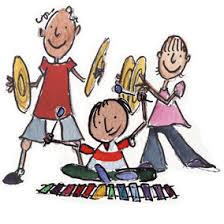There are not too many people who are inclined to learning music and the
arts. That is the reason why enrollment in other endeavors such as
sports outnumbers signups for arts and music subjects. Sad to say, there
tends to be lesser emphasis and opportunity for the creative and
performing arts in education as children move up in the grades. When
there are budget cuts in school districts, the firs hits are art, music,
and drama. This is inopportune because much is to be gained by
providing musical and creative experiences all the way through a child's
learning expedition.
Luckily, preschool and kindergarten core curriculum is a great deal embedded with music, art, and movement. Art and music lessons for children are very significant components of an effective preschool and kindergarten program.
Children
learn a lot by hearing music of different genres. They are
subconsciously trained to distinguish between different sounds, pitches,
and rhythms. They become skilled at identifying rhymes, which are so
common in the lyrics of songs. Rhyming is critical to the development of
phonemic and phonological awareness in children.
Children
learn rhythm fast, something that is important in skills such as
counting and many motor activities. Music has a way of speaking to our
emotions making music lessons for toddlers
more important as part of a child's upbringing. It can optimistically
influence our mood. Music can be inspiring and it makes us feel
excellent. It can also be reassuring, soothing, and consoling. It can
energize us or relax us. The opportunity to hear and play different
instruments builds good auditory discrimination and listening skills. It
is also a strong motivator and means of self-expression.
Art,
in the form of drawing, painting, and crafts, promote and cultivate
growth of many developmental skills. Many fine motor skills are involved
in art activities, such as squeezing glue, using a finger to paste,
holding a scissors to cut, and holding and controlling pens, crayons,
and paint brushes. Kids learn many fundamental concepts through art such
as color, design, patterning, size and shape, and the essence of
borders and boundaries. Numerous visual-perceptual skills are developed
through arts and crafts which include discriminating and attending to
the likenesses and differences in shapes, size, color, position in
space.
The chief knowledge area of the arts is able
to provide children with exclusive and numerous ways of exploring,
forming, expressing, communicating and understanding their own and
others’ ideas and feelings. It provides students with the skills and
knowledge necessary to understand how the arts reflect and depict the
diversity of our world, its cultures, traditions and belief systems.
Original Source: Why Children Must Learn Music and Art

No comments:
Post a Comment